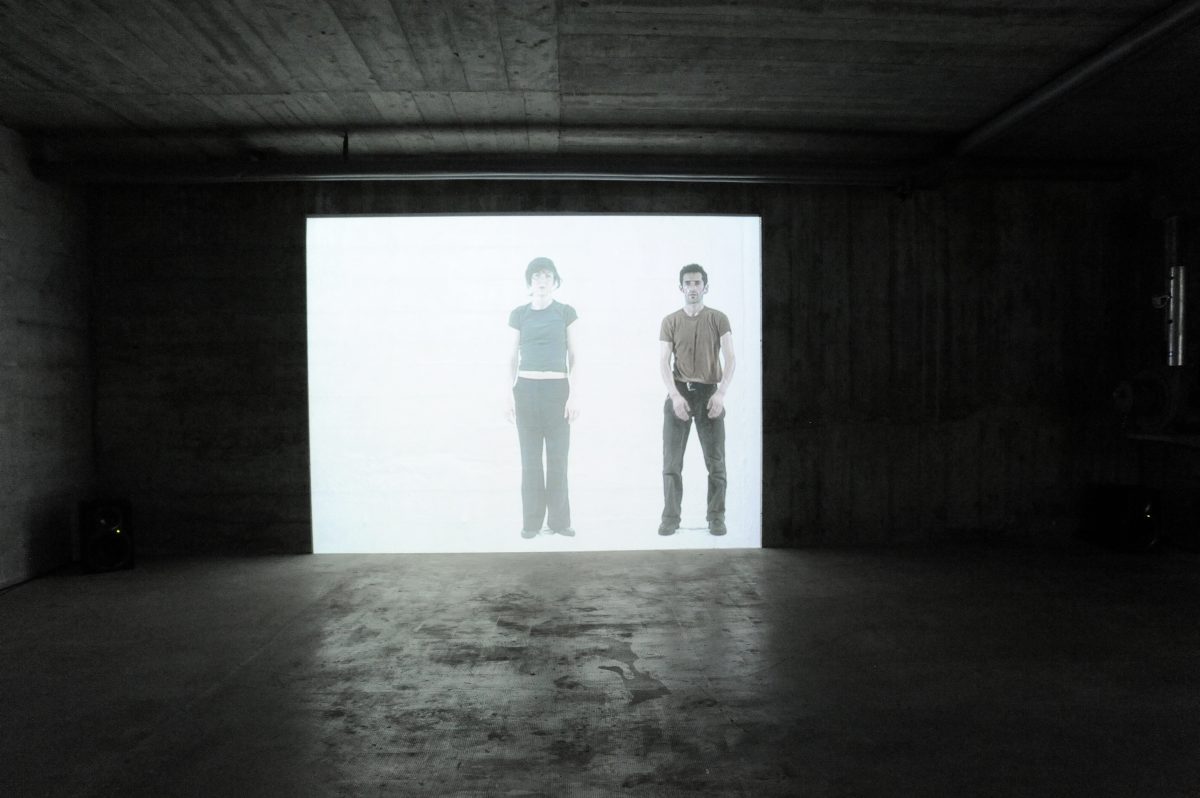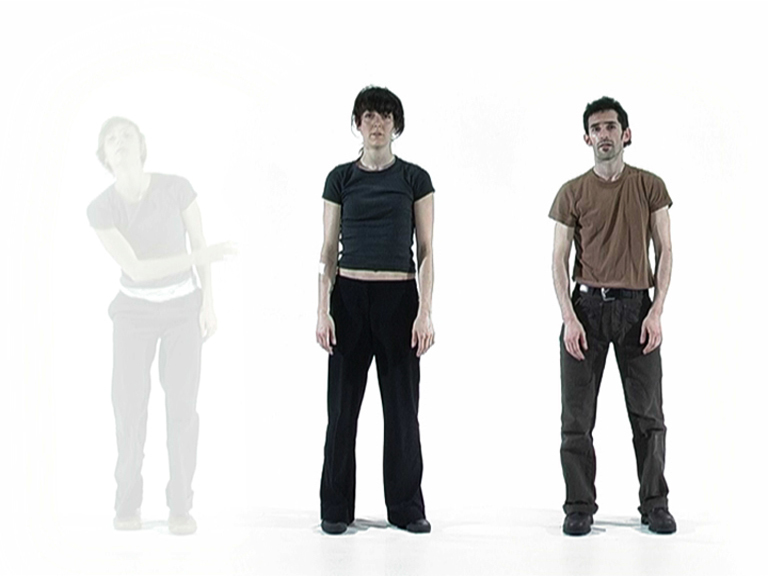Installation / 1-3 Canaux vidéo / Hautparleurs / Loop / 2006
Dans « Fallbeispiel » des danseurs-ses et comédien-nes professionnel-les se soumettent à la réalité physique de la chute. Leurs mouvements de chute sont répétés, invariablement, jusqu’à ce que l’on puisse en déceler les traces physiques qui marquent les corps au fur et à mesure que le temps passe. Or, jamais la chute en tant que telle ne nous est montrée. Ne sont visibles que les moments qui précèdent et qui suivent chaque chute, leur préparation et leur effet. Tout en observant les empreintes que laissent les chutes, on se pose la question, inquiétante, de savoir combien de temps ces corps arriveront encore à tenir, à se maintenir en position sûre. Cette question renvoie directement à la position du spectateur ; peut-on ôter au spectateur son sentiment de sécurité, alors qu’il ne fait qu’observer la scène ?
A l’écran, la chute est remplacée par un mouvement de dissolution et de réapparition des corps. Selon l‘espace d‘exposition disponible, ces images sont projetées sur 2 ou 3 canaux. Les projections font apparaître les danseurs et comédiens en taille réelle. Le mouvement dont il est véritablement question, la chute, exclue de l’image, est repris par le biais de plusieurs pistes audio retravaillées. Celles-ci diffusent les bruits que font les corps, les pulsations, les vibrations, le contact au sol. Ces sons ont été enregistrés avec des microphones stéthoscopes et des microphones de contact. Le son circule en mode surround, et s’oppose à une image silencieuse.
Installation / 1-3 Kanal Video / Lautsprecher / Loop / 2006
In „Fallbeispiel“, einer Untersuchungen über den „stürzenden Körper“, performen professionelle TänzerInnen und SchauspielerInnen Fallbeispiele. Das Stürzen wird unaufhaltsam repetiert, bis die physische Reaktion und Konsequenz der Körper im Bild eintritt und die Zeitdimension erkennbar macht. Es wird ausschliesslich der Augenblick kurz vor und nach dem Fallen, die Vorbereitung, die Wirkung und die Reaktion der stürzenden Personen sichtbar gemacht. Die Spuren und Zeichen des bevorstehenden oder soeben vorhergegangenen Sturzes sollen die Unruhe der Frage auslösen, wie lange der sichere Stand noch gehalten werden kann, und somit vielleicht auch dem geschützten „Stand“ der BetrachterInnen seine Sicherheit entziehen. Der Sturz selbst wird im Bild ersetzt durch ein rhythmisches Auflösen und Wiedererscheinen der Körper. Diese Bilder werden je nach Raumsituation als 2– oder 3–Kanalprojektion installiert, wo die gefilmten TänzerInnen und SchauspielerInnen in Lebensgrösse erscheinen.
Die eigentliche Aktion, der im Bild ausgelassene Sturz, wird in den Tonspuren durch die bearbeiteten und verfremdeten Geräusche der Körper und deren inneres Pochen, Vibrieren, Aufschlagen und Streifen wieder aufgenommen und dem Bild und dessen Stille entgegengestellt. Diese Geräusche wurden mithilfe von Kontakt– und Stethoskopmikrofonen aufgenommen, und bespielen die Installation als Geräuschekomposition im Surroundmodus.
Text von Christoph Lichtin
Installation / 1-3 Channel video / Speakers / Loop / 2006
In “Fallbeispiel”, which looks at the “falling body”, professional dancers and actors perform examples of falls. The falls are repeated relentlessly until their physical effects can be seen, thus allowing the viewer to discern the passage of time. Only the seconds just before and after the fall – the preparation, the effect and the reaction of the falling person – are made visible. The traces and signs of the moments just before or after the fall entail the uneasy question of how much longer each steady position can be held, thereby potentially depriving the observer from their own protected position.The fall itself is replaced in the picture by a rhythmic “fading-out” and reappearance of the body. Depending on the available space, life-size pictures of this filmed dancers and actors are installed as a dual or triple channel projection.
The actual action, the fall not shown in the picture, is resumed on the sound track, which captures the adapted and abstracted sounds of the bodies and their internal throbbing, vibrating, thudding and scuffing. This stands in opposition to the image and its silence. These noises are recorded using contact and stethoscope microphones, and represent an audio composition within the installation, in the form of surround sound.









